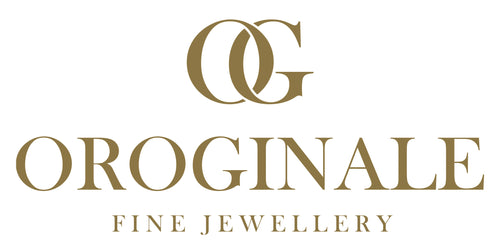Cut
A diamond’s brilliance, finish, and proportions are all perceived by the cut of a diamond. A poorly cut diamond will lack radiance even if it has perfect colour and clarity. It is the width and depth of a diamond that determines its luminosity. Both shallow and deeply cut diamonds lack the brilliance of an ideal cut due to the escape of light through the base of the stone.
Round Brilliant
The round cut diamond is the most popular diamond shape. With 58 facets, this kind of diamond can reflect light like no other. The mostly sparkly of them all!
Oval
Oval shaped diamonds are a modified brilliant cut with similar fire and brilliance to round cut diamonds. It's added length gives the illusion of a larger diamond.
Pear
The pear shape is a cross between round and marquise diamond cuts. This kind of diamond is almost as brilliant as the round cut but with a more unusual shape.
Radiant
True to its name the Radiant cut is one of the sparkliest of them all! It's shape is reminiscent of an Emerald cut, but with the sparkle of a round brilliant. Available in elongated shapes, the choice is yours.
Cushion
Cushion cut diamonds show excellent fire!, the angles in are made for flashes of coloured light. Despite being one of the oldest cuts, the cushion has seen a resurgence in popularity.
Emerald
One of the rarer diamond shapes. An Emerald cut offers a different kind of sparkle due to its unique cut. These diamonds reflect light in a beautiful and subtle “hall of mirrors” effect.
Carat
Each carat can be subdivided into 100 'points.' This allows very precise measurements to the hundredth decimal place. A jeweler may describe the weight of a diamond below one carat by its 'points' alone. For instance, the jeweler may refer to a diamond that weighs 0.25 carats as a 'twenty-five pointer.' Diamond weights greater than one carat are expressed in carats and decimals. A 1.08 carat stone would be described as 'one point oh eight carats.'
All else being equal, diamond price increases with diamond carat weight, because larger diamonds are more rare and more desirable. But two diamonds of equal carat weight can have very different values (and prices) depending on three other factors of the diamond 4Cs: clarity, colour and cut.
It's important to remember that a diamond's value is determined using all of the 4Cs, not just carat weight.
Clarity
The more flawless the diamond, the more value it has. Clear and colourless diamonds most often look perfect to the naked eye, yet each stone has what we call imperfections or inclusions. Inclusions are the traces of nature left behind in the birth of each diamond. Whether it is scratches or tiny pieces of minerals left behind, each diamond has what we call its flaws.
It is Important when choosing the size of your stone that if it is less than ¾ carat it is preferable to choose colour over clarity. Vice versa when buying a larger stone; clarity overrides the importance of colour. Diamonds are graded according to their number of flaws. The more imperfections, the less valuable the stone.
Colour
Colour is very important when choosing a diamond. The more clear and colourless the diamond, the higher it is graded on the GIA scale. According to the GIA scale, each stone is rated with regard to the amount of colour emitted out of the diamond, giving each stone its brilliance.
Colourless D, E & F
While there are differences in colour between D, E, and F diamonds, they can be detected only by a gemologist in side by side comparisons and rarely by the untrained eye.
Near Colourless G, H, I & J
While containing traces of colour, G-J diamonds are suitable for a platinum or white gold setting, which would normally betray any hint of colour in a diamond. As I-J diamonds are more common than the higher grades, they tend to be a great value.
Faint Colour K, L & M
Beginning with K diamonds, colour (usually a yellow tint) is more easily detected by the naked eye.
Very Light Colour N - R
Diamonds in this colour range have an easily seen yellow tint, but are much less expensive than higher grades.
Light Colour: S - Z
For almost all customers, S-Z diamonds have too much colour for a white diamond.
Coloured Diamonds
Fancy coloured diamonds are found in a variety of beautiful colours ranging from yellows, browns and oranges, to pinks, reds and purples - even blues, greens and black. The intensity levels of their colour varies. The rarity and beauty makes them highly valuable. Deep saturated pink diamonds are extremely rare and very desirable.









